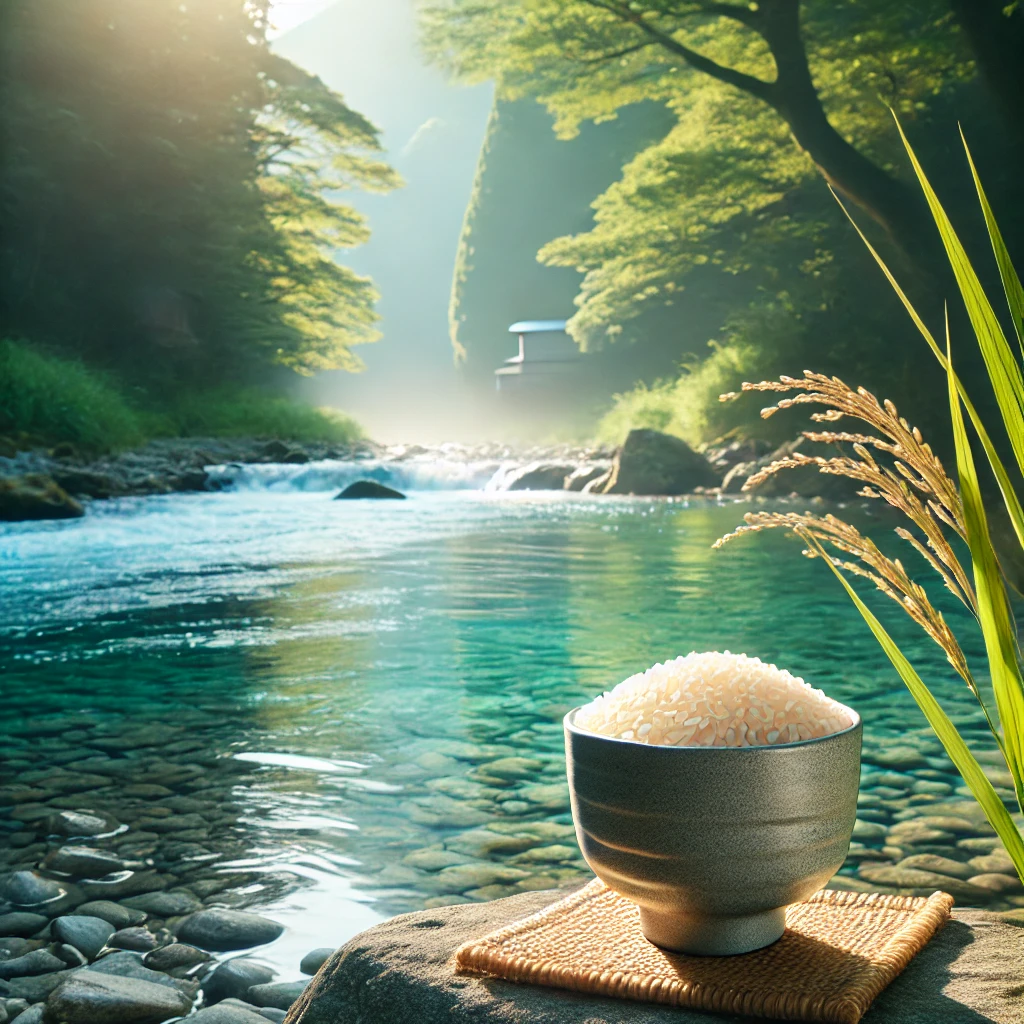Exploring the Charm of Sake: The Supreme Sip Made from Rice and Water
Hello, I’m Mana! This time, as I continue my studies for the Sake Certification, I want to talk about the “ingredients of sake”. The basic ingredients for making sake are, needless to say, “rice” and “water.” But have you ever considered how crucial they are and how they affect the taste and aroma? In this article, we will focus on these indispensable elements in sake brewing, delving deep into the allure of rice and water.
The Ingredient ‘Rice’ in Sake
The main ingredient in sake is rice, and a special variety is used, known as “sake-brewing suitable rice (shuzo-kotekimai)”. This rice is different from the rice eaten as food; it has characteristics that are suited specifically for sake brewing.
Characteristics of Sake-Brewing Suitable Rice
Sake rice is known for its larger grains and a cloudy part called “shinpaku”, a white, opaque core. This shinpaku is a cavity at the center of the rice grain, which allows koji mold to penetrate easily. This facilitates the conversion of rice into sugar, enabling smooth fermentation.
Sake rice contains less protein and fat, which are the causes of off-flavors, resulting in a clean and clear taste. Famous varieties include “Yamadanishiki,” “Gohyakumangoku,” “Omachi,” and “Miyamanishiki.”
Representative Sake-Brewing Suitable Rice and Their Characteristics
- Yamadanishiki: This is the leading sake rice in Japan, especially suited for ginjo and daiginjo sake. It has large grains with a large shinpaku, which makes it resistant to breaking even at high milling rates, making it very user-friendly. Sake made from Yamadanishiki is known for its elegant aroma and deep flavor.
- Gohyakumangoku: A representative sake rice from Niigata Prefecture. Compared to Yamadanishiki, it produces a lighter and cleaner tasting sake, often used in dry sake varieties.
- Omachi: Cultivated in Okayama Prefecture, this variety can produce rich and complex flavored sake. Milling Omachi rice is challenging, requiring skilled techniques, but it yields sake with distinctive characters.
Cultivation Environment for Sake-Brewing Suitable Rice
Sake rice is considered more challenging to cultivate compared to ordinary eating rice. It grows taller and is more susceptible to falling over due to strong winds like typhoons. Additionally, the importance of the shinpaku in milling for retaining starch content adds to the complexity of its cultivation and harvesting.
Moreover, sake rice contains less protein and fat, leading to a less off-flavor and a clearer taste in sake. These cultivation efforts make sake rice significantly more expensive than table rice, often costing 1.5 to 2 times more.
Indispensable ‘Water’ in Sake Brewing
Next, let’s talk about another crucial ingredient in sake, ‘water’. Over 80% of sake is made up of water, hence the quality of water greatly influences the taste of sake. The water used in sake brewing is referred to as “brewing water (shuzo-yousui)” or “mashing water (shikomimizu)”.
Conditions for Brewing Water
Brewing water must meet several criteria, particularly it should be “low in iron content”. High levels of iron can alter the color of sake and degrade its flavor. Essential for promoting the activity of yeast and koji mold are adequate amounts of “potassium, phosphorus, and magnesium”. These elements help in fermentation, enhancing the rich taste and aroma.
How Water Hardness Affects Sake Flavors
Water is classified into ‘hard’ and ‘soft’, and this distinction affects the flavor profile of sake. Sake brewed with soft water tends to be milder, easier to drink, and has a clean taste, while hard water produces sake with a robust body and rich flavor.
For instance, sake from Niigata, known for using soft water, is famous for its “light and dry” style. Its crisp and sharp flavor pairs excellently with seafood. Conversely, sake made with hard water is rich and complex, making it a great match with heavier, flavorful meat dishes.
Famous Waters for Sake Brewing
Across Japan, there are numerous ‘famous waters’ suited for sake brewing. Here are a few notable water sources:
- Water of Nada (Hyogo Prefecture): Known for producing ‘masculine’ sake, part of the reason lies in this water. It’s a moderately hard water rich in minerals, ideal for creating robust flavored sake.
- Famous Water of Fushimi (Kyoto Prefecture): Symbolic of ‘feminine’ sake, this soft water yields sake that is soft and smooth, producing delicately flavored sake.
- Brewing Water of Saijo (Hiroshima Prefecture): Another region in Hiroshima renowned for its excellent water, well-balanced in minerals, which is particularly known for its rich flavor profiles.
The Diversity of Sake Created by Rice and Water
As we can see, the flavor of sake is significantly influenced by the choice of rice and the water used in brewing. Factors like the type of rice, cultivation area, and the mineral balance of the water contribute to the unique characteristics of sake.
When choosing sake in the future, considering ‘what kind of rice is used?’ and ‘what water is used?’ can deepen your appreciation and enjoyment of sake’s complexity.
Summary
In this article, we explored the basics of sake—’rice’ and ‘water’, both of which are crucial elements that determine the flavor of sake. Next time you enjoy sake, pay attention to the rice and water used in its brewing. This will undoubtedly enhance your appreciation and enjoyment of sake!
Sake is a wonderful beverage that brings together the blessings of nature and human craftsmanship. Next time you have a sip, appreciate the crucial roles rice and water play in its creation.



コメント